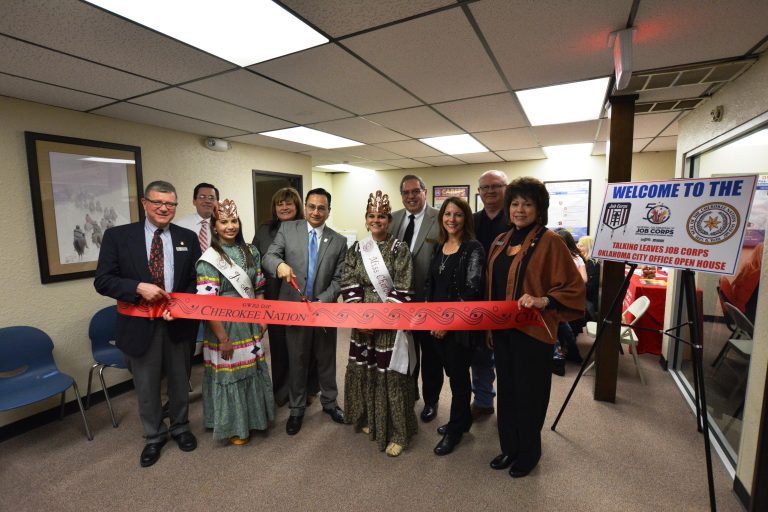Podcast: Play in new window | Download | Embed
The Eastern Shoshone and Northern Arapaho tribes recently received grants from the U.S. Department of Housing and Urban Development.
But as Wyoming Public Radio’s Hannah Habermann reports, other housing-related funding for the tribes is a little less certain.
Tribes around the country receive federal support through the annual Indian Housing Block Grant.
This year, the Eastern Shoshone Tribe got about $2.3 million and the Northern Arapaho Tribe received about $3.6 million.
Emery’l LeBeau is the director of the Northern Arapaho Housing Authority.
“We get this Block grant based on a formula, right? And so it’s based off the units and our need.”
The money keeps housing authorities operating and helps maintain their current housing.
President Donald Trump’s proposed budget would decrease that funding by about 20%.
An earlier draft also called for eliminating a competitive community development grant.
Gilbert Riche is with the Eastern Shoshone Housing Authority and says losing that would have a direct impact on future projects.
“ That’s the primary funding source for us to spearhead new housing development.”
Congress is still in the process of reviewing the budget.

The Hopi Nineteen – all hailing from the pueblo village of Oraibi in northern Arizona – were arrested by the U.S. Army in 1894. (Courtesy Mennonite Library and Archives / Bethel College)
Last month, President Trump announced plans to reopen and rebuild Alcatraz, one of America’s most infamous prisons that was shut down six decades ago.
For now, it’s a federal historic landmark managed by the National Park Service.
Several top leaders from the Bureau of Prisons, including engineers, recently toured Alcatraz to conduct site assessments.
As KJZZ’s Gabriel Pietrorazio reports, the 22-acre island within the San Francisco Bay has strong ties to the Hopi Tribe of Arizona.
First a pre-Civil War fort, then a military prison, this maximum security federal penitentiary housed some of the nation’s most notorious inmates from Al Capone to George “Machine Gun” Kelly. But Matthew Sakiestewa (Hopi), a history professor at the University of Arizona, says they all had one thing in common.
“ The federal government has always seen that island as a place to put problematic people, including a group of 19 Hopi men.”
Some refer to them as the Hopi Nineteen hailing from the pueblo village of Orayvi perched atop Third Mesa in the high desert of northern Arizona.
The Hopis were charged with sedition after refusing to let their children attend Indian boarding schools.
With no due process since they were considered wards of the state, the then-Commissioner of Indian Affairs sentenced the Hopi Nineteen to confinement and hard labor in 1895 – nearly a thousand miles away.
“ You will encounter steep walkways, uneven surfaces and tripping hazards on Alcatraz Island. Please watch your step. Right now, it’s a park. This is a place for the public. I’ve taken the ferry boat trip there, less than two miles from the shore, and you can learn about this Native history.”
Sakiestewa says Alcatraz Island is also a political symbol.
“ Whether that’s [the] federal government’s perspective or also Indigenous people.”
And for Trump, Alcatraz is not only a symbol of law order.
“ It’s a big hulk that’s sitting there rusting and rotting, but it sort of represents something that’s both horrible and beautiful and strong and miserable. Weak.”
Tune in tomorrow for part two of this series on Alcatraz’s ties to the Hopi.

Lakota Sioux warriors charge Colonel William Royall’s detachment of Cavalry in this wood engraving from Frank Leslie’s Illustrated Newspaper, August 12, 1876. (Courtesy Library Of Congress)
And on this day in 1876, the Battle of the Rosebud took place in eastern Montana between 4,000 Lakota Sioux warriors and General George Crook’s troops.
His men were surprised and caught in the open of a gully, but his Crow and Shoshone allies blunted the attack long enough for Crook to regroup.
He lost 28 out of 1300 men, but the greater disaster – the Battle of Little Bighorn – was eight days away.
Get National Native News delivered to your inbox daily. Sign up for our daily newsletter today.




Leave a Reply